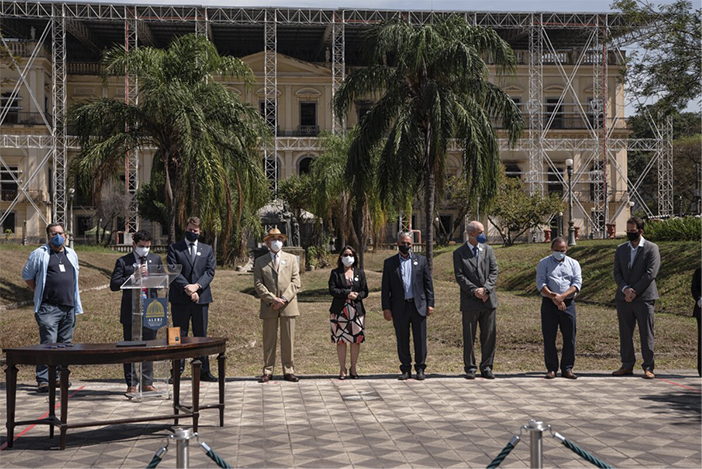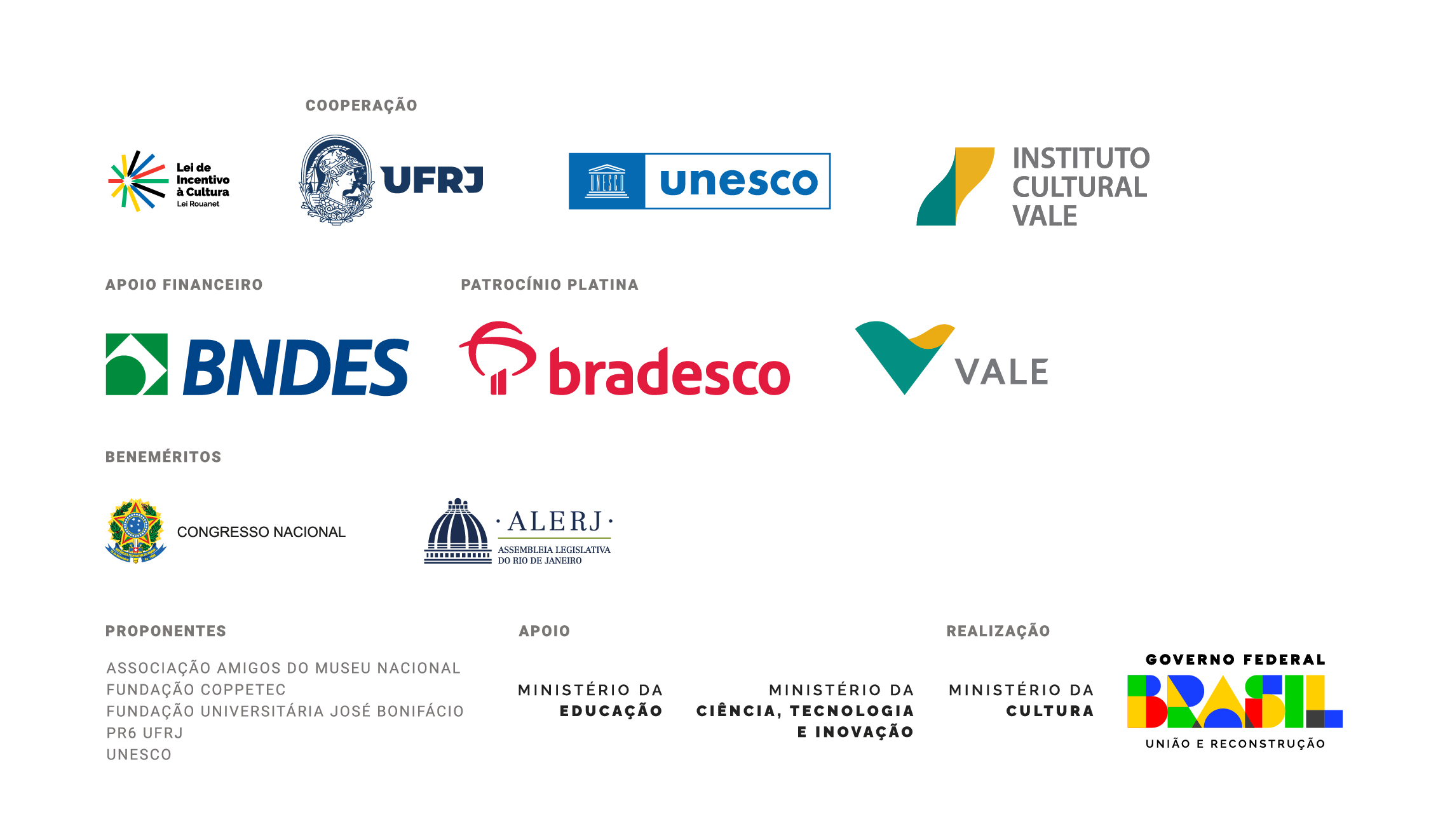ALERJ OFFICIALIZES TRANSFER TO THE NATIONAL MUSEUM
The Legislative Assembly of the State of Rio de Janeiro (Alerj) will transfer, as authorized by Law 8.971/20, sanctioned by Governor Wilson Witzel, R$ 20 million from the city of Rio de Janeiro Parliament Special Fund to the Federal University of Rio de Janeiro (UFRJ). The funds will be directed to the rebuilding project of the National Museum/UFRJ, at Quinta da Boa Vista. A ceremony was held on August 19, 2020, in front of the São Cristóvão Palace, to highlight the signing of the “Donation Term for the National Museum Restoration.”

The president of Alerj, André Ceciliano (PT) points out that the National Museum/UFRJ is the oldest Brazilian scientific institution and one of the largest museums in the Americas. “The Parliament of the city of Rio de Janeiro recognizes the importance of the National Museum/UFRJ for the history and culture of the country and our state. It is symbolic that this contribution takes place at the moment when the University celebrates its centenary,” he highlights.
The transfer will be made from the presentation to Alerj of an executive work plan, detailing the actions taken and the objectives, expense items and disbursement schedule. In addition, UFRJ shall commit to disclose all information on its official website, ensuring transparency of the entire process.
For Denise Pires de Carvalho, UFRJ Dean, an institution to which the National Museum/UFRJ is linked, it is very important to be able to show the history of Brazil again. “Alerj’s support for rebuilding of the Paço de São Cristóvão, the National Museum, will enable the recovery of our history, ensuring that Brazilian society can have access to the rich scientific, artistic and cultural heritage with the return of the exhibitions as soon as possible.”
According to the National Museum Director, Alexander Kellner, the initial project was approved by Alerj and the process is advancing as expected. “We just need to work out the details of how the resources will be used and how the archaeological work will be carried out during the works. As soon as we finish this study, we will submit the project to Alerj and start the bidding process,” he explained.
Also according to Kellner, “from this budget we get closer to half of our total need. And we are sure that this example given by the Parliament of the city Rio de Janeiro will be followed by other institutions, enabling us to do what is necessary to deliver part of the facades and roofs of the Museu Nacional/UFRJ in 2022, when the bicentennial of Brazil’s independence will be celebrated. Our forecast is that the definitive opening of all the rooms will take place in 2025,” he explains.
MUSEU NACIONAL VIVE PROJECT
Museu Nacional Vive Project is the result of technical cooperation established between the Federal University of Rio de Janeiro (UFRJ), United Nations Educational, Scientific and Cultural Organization (UNESCO) and Vale Cultural Institute.
The contribution of resources from the Special Fund of the Parliament of the city of Rio de Janeiro guarantees the advance of the bidding processes for the works of restoration of the facades and roofs of the Paço de São Cristóvão. The first stage of the works will start in February 2021 and will also be carried out with funds from the private sector. The interventions planned for this first moment have already been approved by the National Historical and Artistic Heritage Institute (IPHAN).




